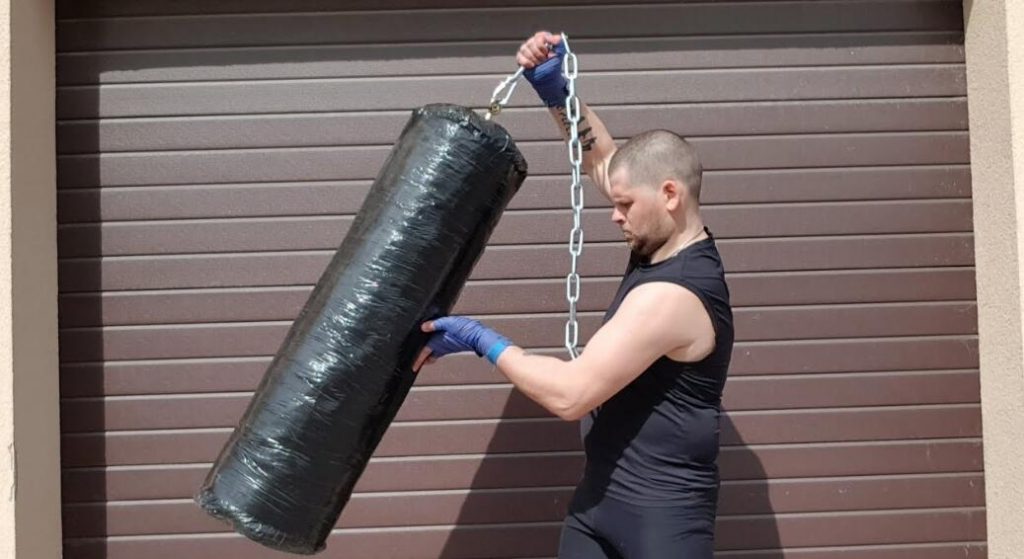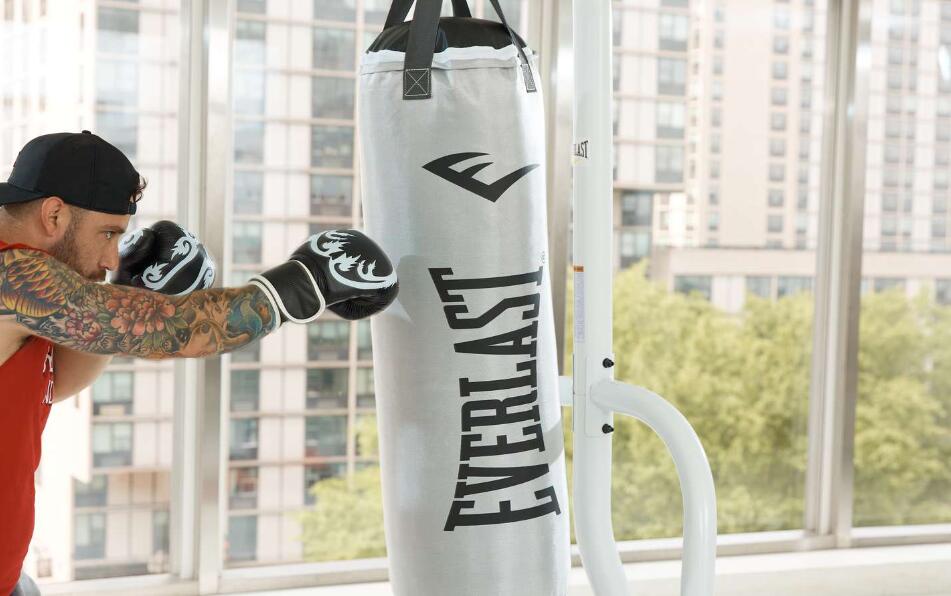When it comes to your workout, what you put into your body is just as important as what you do with your body. This is especially true when it comes to punching bags. If you’re not using the right filling for your bag, you could be doing more harm than good. So What do you fill a punching bag with?
As you begin thinking about what you want to put into your punching bag, it’s important to first consider what type of bag you have. There are two main types of punching bags: lightweight and the heavy boxing bag. The lightweight bag is filled with materials that make it light and easy to move around, while the heavy boxing bag is filled with materials that make it much harder and more durable.
In this blog post, we will discuss the best options for filling your punching bag and getting the most out of your workout!
Materials For A Lightweight Punching Bag

Just as with heavy boxing bags, there are different types of lightweight punching bags that require different types of fillings. The speed and reflex bag are the two most common types of lightweight punching bags.
The speed bag is a small, round punching bag that is filled with air and is used to improve your speed, agility, and hand-eye coordination. It is important to use a speed bag that is specifically designed for boxing, as regular bags can be too soft and will not provide the same level of resistance.
The best filling materials for a speed bag are sawdust, old clothes, and sand, which will help to keep the bag sturdy and in place. Or you can inflate everlast speed bag, which is what most people use.
The reflex bag is a small, oval-shaped punching bag that is filled with air or water and is used to improve your hand-eye coordination and reflexes. Reflex bags are typically made of synthetic materials such as vinyl or leather, which makes them more durable than speed bags.
However, the reflex bag is designed to improve your reflexes and timing, rather than your speed. As with the speed bag, it is important to use a reflex bag that is specifically designed for boxing.
The best filling materials for a reflex bag are water and sand. Water makes the bag heavy and stable, while sand provides the right amount of resistance to help improve your strength and power.
Materials For A Heavy Boxing Bag

What are the best materials for a heavy boxing bag? Heavy boxing bags are designed for athletes who are looking to improve their strength, power, and stamina. The best filling materials for a heavy boxing bag are sand and gravel.
Sand provides the right amount of resistance and helps improve your strength and power, while gravel helps improve your stamina by increasing the time you can keep your punches up.
When filling your heavy boxing bag, be sure to start with the bottom layer of sand or gravel. Then, add a layer of cloth or water to help keep the bag in place. Finally, top off the bag with a layer of hay or shredded paper.
No matter what type of punching bag you have, it’s important to choose the right filling materials to get the most out of your workout. Hay, sand, gravel, water, and cloth are all great options that will help improve your speed, agility, strength, power, and overall fitness level.
How To Fill A Punching Bag By Yourself?
Step 1. Locate the filling port on your punching bag.
The filling port on your punching bag is typically located at the base of the bag. However, some bags may have multiple ports, so be sure to check the instructions that came with your bag.
Step 2. Insert the filling funnel into the filling port.
The filling funnel will help to prevent the contents of your punching bag from spilling out.
If you’re using a water-based filling, such as sand or gravel, begin by wetting down the material. This will help to keep the dust down when you start filling your bag.
Step 3. Pour the desired filling material into the funnel.
Fill the bag until it is about two-thirds full. Be sure to pack the material down as you go to avoid any air pockets.
If you’re using a cloth or hay filling, be sure to pack the material tightly so it doesn’t shift during use.
-If using a water-based filling, such as sand or gravel, begin by wetting down the material.
-Fill the bag until it is about two-thirds full, and pack the material down as you go to avoid any air pockets.
Step 4. Use a broom or stick to move the material around and help it settle into the bag.
Once the bag is two-thirds full, use a broom or stick to help move the material around and allow it to settle into the bag.
Step 5. When finished, remove the funnel and seal the filling port with the plug provided.
Once the bag is full, remove the funnel and seal the filling port with the plug provided. If your punching bag didn’t come with a plug, you can use a piece of tape or cloth to seal the port.
Now that you know how to fill a punching bag, it’s time to get started on your workout!
What Kind of Damage Can You Do with an Ineffective Filling?
If you choose the wrong filling for your punching bag, you could end up doing more harm than good.
For example, filling your punching bag with sand, gravel, or water could leak out and damage your flooring.
Additionally, if you use a too soft filling, such as old clothes or paper, your punching bag could lose its shape and become ineffective. Finally, if you use a too hard filling, such as concrete or metal pellets, your punches could bounce back and injure you.
If you use the filling that are too hard, your punches could bounce back and injure you. So you must choose the right filling for your punching bag.
That’s why choosing the right materials for your punching bag is important. Sand, gravel, water, cloth, and hay are all great options that will help you get the most out of your workout.
The best way to avoid these problems is to consult a professional trainer or boxing coach before you fill your punching bag. They will be able to help you choose the right materials for your specific needs.
FAQs
1: What are the best materials to fill a punching bag with?
Many different materials can be used to fill a punching bag, but some of the best options include sand, gravel, or rice.
2: How much should the material weigh?
The weight of the material will depend on the size of the punching bag. A good rule of thumb is to use around 10-15 pounds of material for every inch of the punching bag.
3: What should I do if I don’t have any of those materials?
You can use water or foam if you don’t have any of those materials.
Conclusion
Once you’ve determined the type of punching bag you have, it’s time to start thinking about what you should fill it with. If you’re looking for a workout that will help improve your speed, agility, and cardio, then you should fill your punching bag with hay or shredded paper.
If you’re looking for a workout that will help improve your strength and power, then you should fill your punching bag with sand or gravel. And if you’re looking for a workout that will help improve your overall fitness level, then you should fill your punching bag with water or cloth.
If you enjoyed this article, please share it with your friends! Stay tuned for more blog posts like this in the future.
